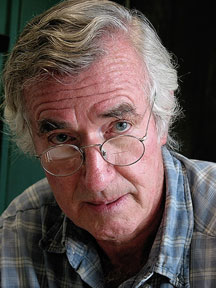 Despite writing classic books read by millions, John Steinbeck wasn’t on the approved list of great writers when I attended Wake Forest and pursued my PhD at the University of North Carolina. I chose to study the connections between William Blake and William Butler Yeats for my dissertation and taught classic books by other great writers (not Steinbeck) to bored college students before returning to Wake Forest to work as university editor. There I reported to Wake Forest’s legendary provost, a popular English professor who inspired a love of Blake, Yeats, and classic books and plays of the Irish literary renaissance in generations of students like me. We shared an interest in new drawings, particularly creative images of great writers, and he introduced me to the literary portrait etchings of Jack Coughlin, a professor of printmaking at the University of Massachusetts. I love creative images as much as classic books, and Coughlin brought these passions together in new drawings of established writers sold at affordable prices. When the artist issued new drawings of Irish writers in a limited edition, I bought a copy of his haunting portrait of Yeats. For 35 years it has followed me wherever I moved.
Despite writing classic books read by millions, John Steinbeck wasn’t on the approved list of great writers when I attended Wake Forest and pursued my PhD at the University of North Carolina. I chose to study the connections between William Blake and William Butler Yeats for my dissertation and taught classic books by other great writers (not Steinbeck) to bored college students before returning to Wake Forest to work as university editor. There I reported to Wake Forest’s legendary provost, a popular English professor who inspired a love of Blake, Yeats, and classic books and plays of the Irish literary renaissance in generations of students like me. We shared an interest in new drawings, particularly creative images of great writers, and he introduced me to the literary portrait etchings of Jack Coughlin, a professor of printmaking at the University of Massachusetts. I love creative images as much as classic books, and Coughlin brought these passions together in new drawings of established writers sold at affordable prices. When the artist issued new drawings of Irish writers in a limited edition, I bought a copy of his haunting portrait of Yeats. For 35 years it has followed me wherever I moved.
I finally read the classic books of John Steinbeck after relocating to the Bay Area and becoming the weekend organist at St. Paul’s, the great writer’s childhood church in Salinas. So I was searching for old books about Steinbeck, not new drawings, when I rediscovered the creative images of Jack Coughlin at a Monterey bookstore after church one Sunday last month. Delighted, I perused and purchased Impressions of Bohemia, a limited-edition boxed folio of new drawings by Coughlin of a dozen writers and artists—including Steinbeck—associated with Monterey, Carmel, and Big Sur. Published in 1986 by Pacific Rim Galleries, Coughlin’s creative images of California’s Central Coast Bohemians made a superb self-gift, and Steinbeck now hangs next to Yeats in my home, as in my heart. In addition to creative images, the folio features selected passages from classic books, poems, or journals written by Coughlin’s celebrated subjects, plus lively commentary by Richard Dillon, a popular writer of classic books about California history. Dillon’s vivid prose delivers several pleasant surprises. For example, Carmel’s Point Lobos, where family members scattered Steinbeck’s ashes in 1968, was discovered for literary purposes 90 years earlier by Robert Louis Stevenson, the author of Treasure Island and other classic books read by Steinbeck as a boy. It’s also where friends of Jack London—another author admired by Steinbeck—scattered the ashes of London’s lover 60 years before Steinbeck died.
If you’re like me and enjoy owning classic books and new drawings, particularly creative images of great writers in collectible formats, keep your eye open for Impressions of Bohemia, limited to 125 signed copies when published. Meanwhile, Jack Coughlin’s creative images of great writers and jazz musicians—a particular passion of Steinbeck, who collected records and books with equal relish—are available for purchase online at www.jackcoughlin.com/.
Photo of Jack Coughlin by Ken Buck.
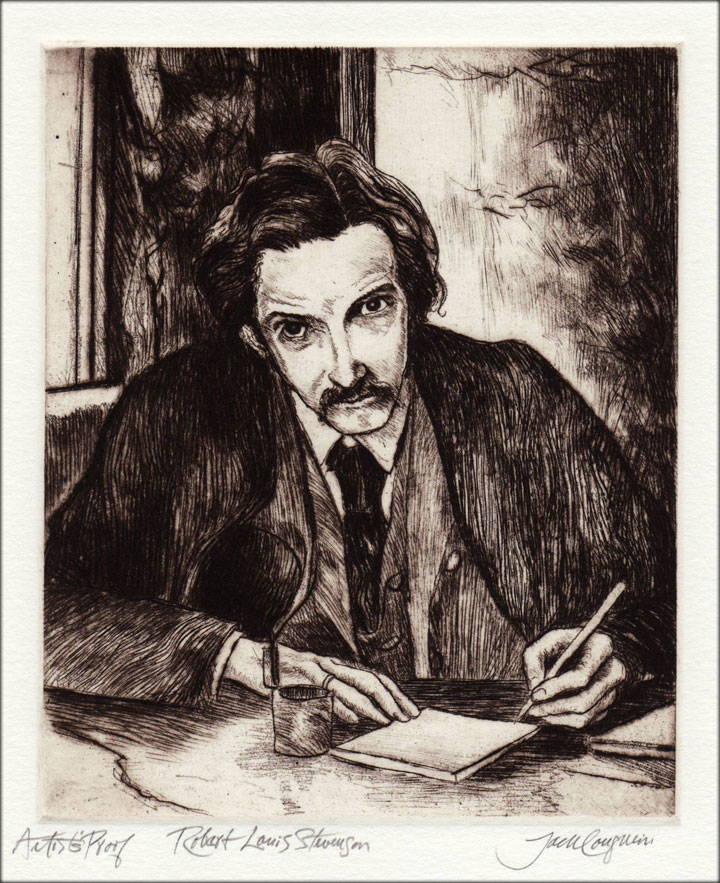
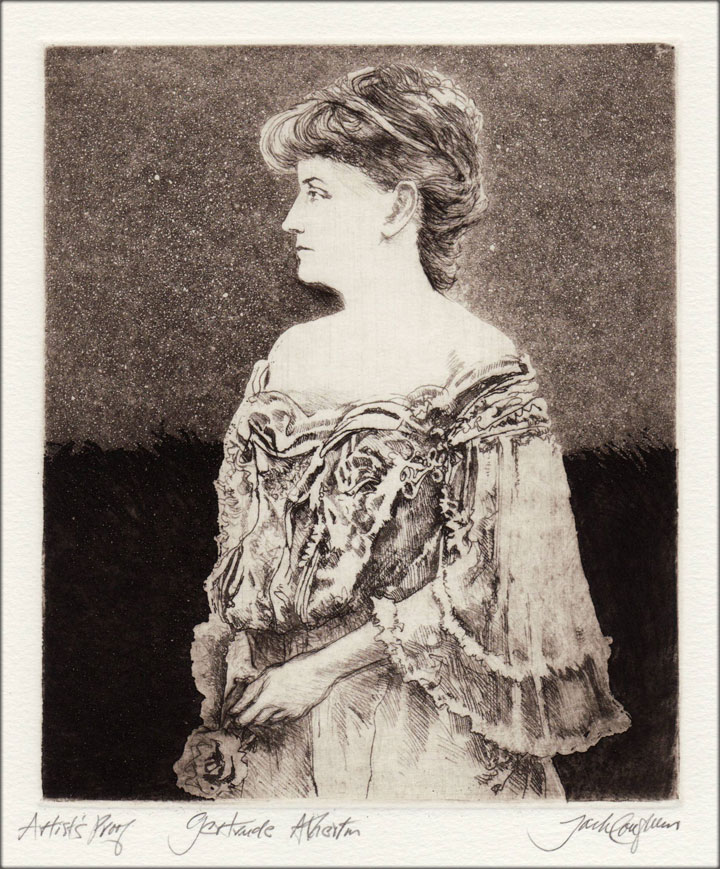
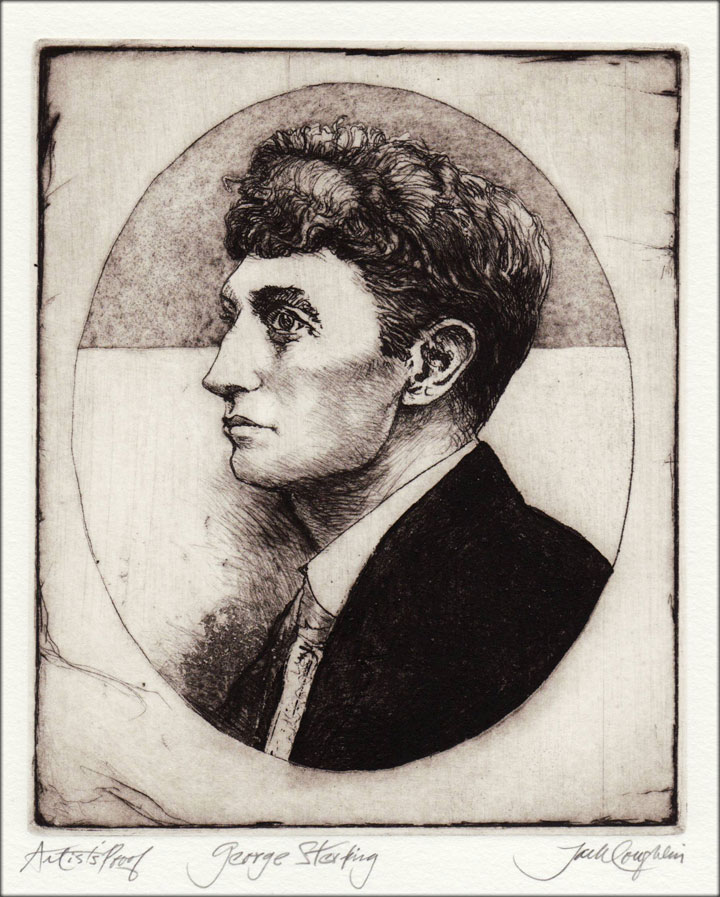
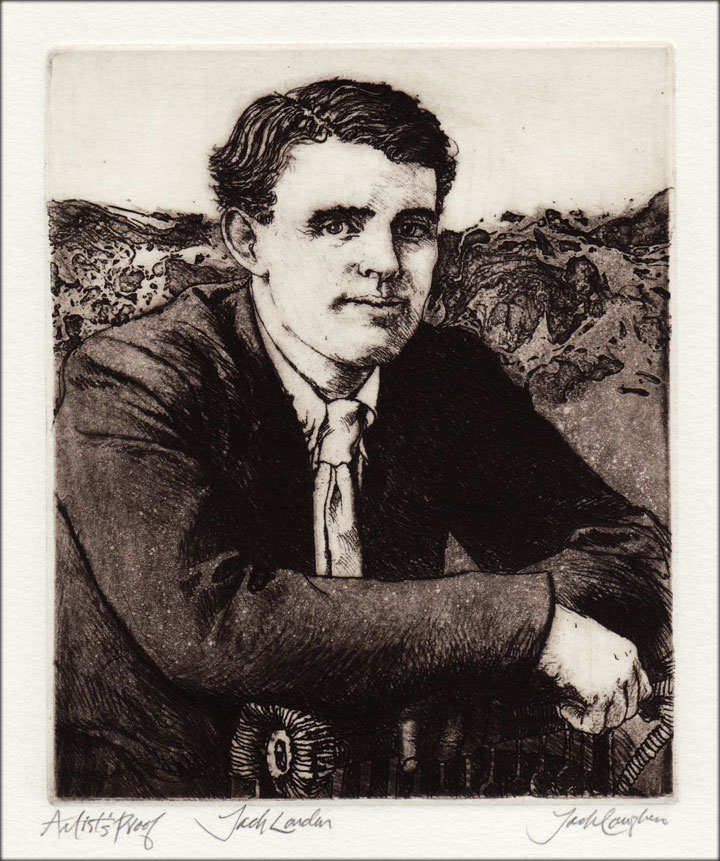
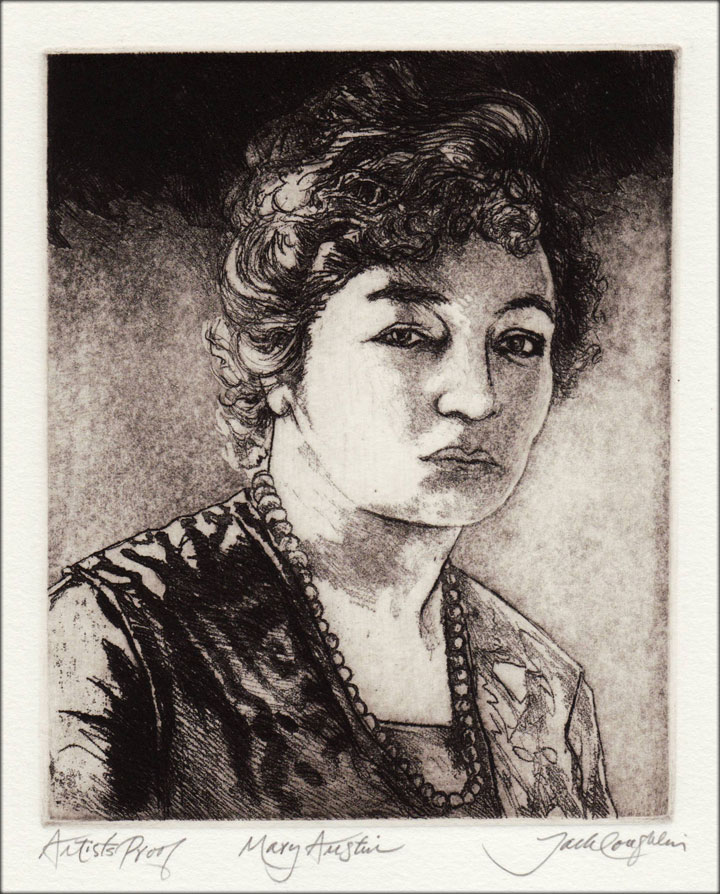
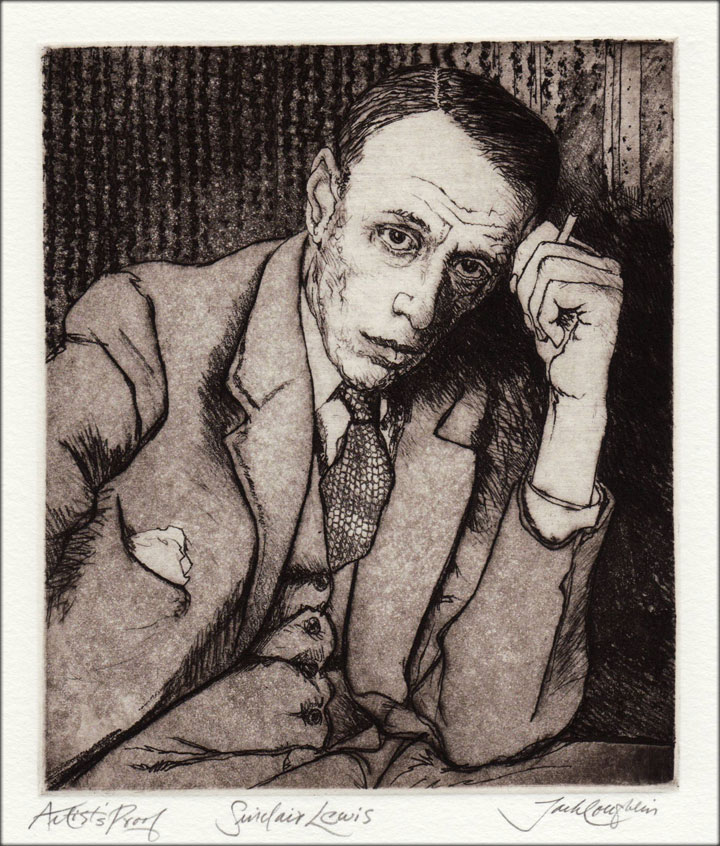
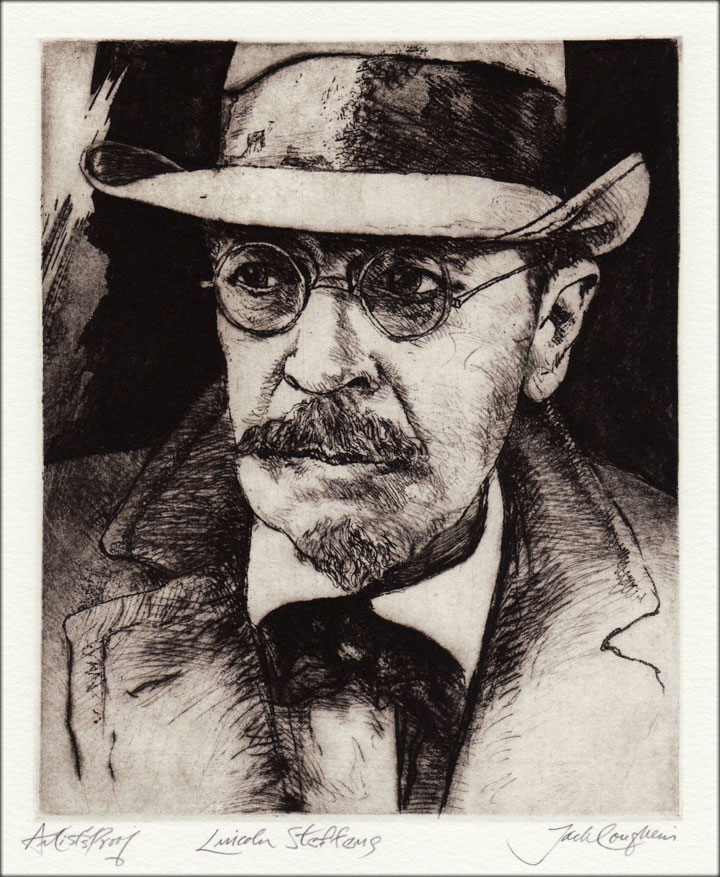
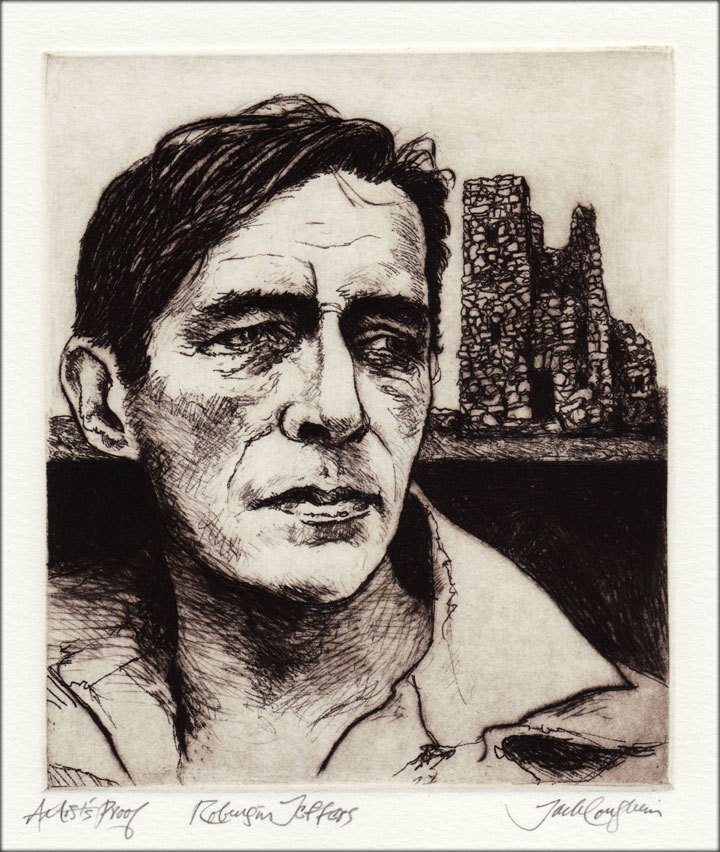

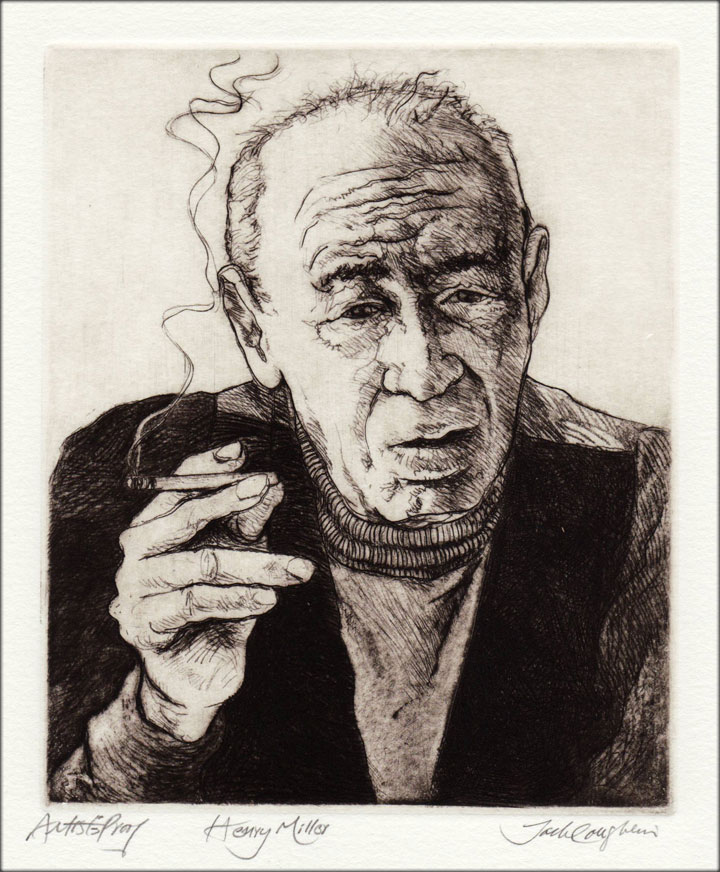
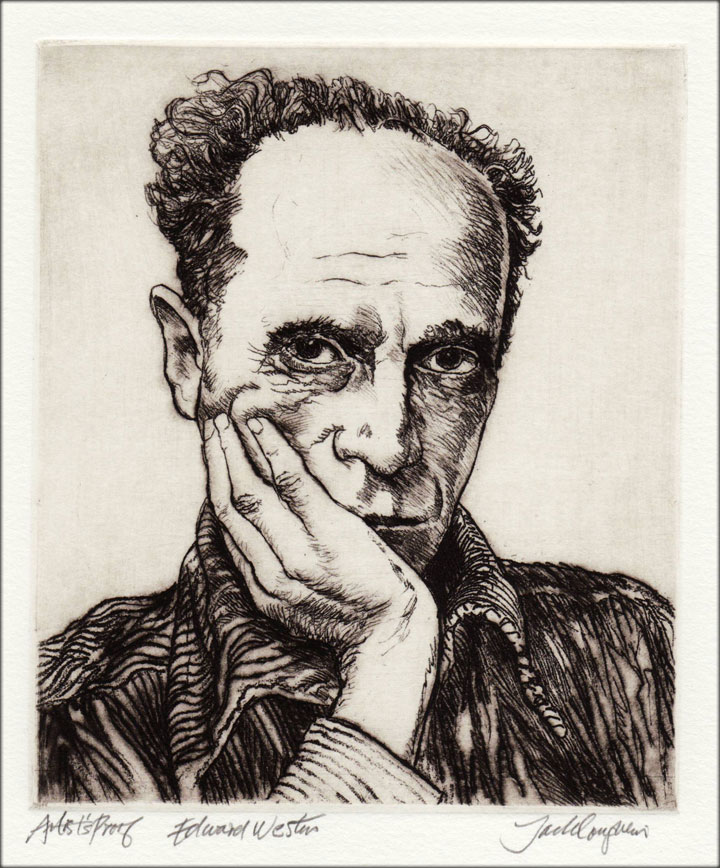
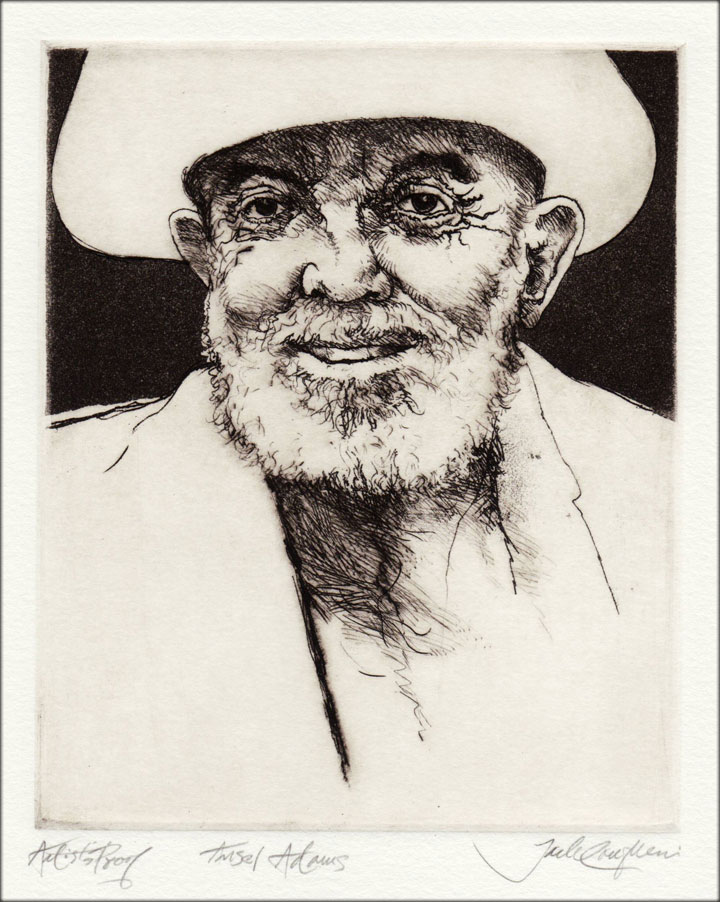

Will,
For a time I’ve entertained suspicions about your being a Renaissance man, and now this posting confirms them. Thank you, kind professor, for introducing me to Jack Coughlin. (As my Aunt Lucille would say, “An Irishman — no surprise, of course!”)
As usual, I feel I should be forwarding some tuition to you. Keep the lessons coming.
Best,
McK
No charge! Your friendship and collaboration are payment in full. As an nonprofit, noncommercial site, we aim to educate while entertaining, and I’m glad we succeeded. Jack Coughlin’s work has meant much to me over the years, and the serendipitous discovery of his Carmel suite of etchings, including Steinbeck–who identified as Irish in his imaginative genealogy–was too good not to share. I agree: The Irish rule! It was humbling to read recently in Peter Ackroyd’s superb history of the British Isles, ‘Foundation,’ that the Irish were civilized long before my English ancestors started putting on clothes before going into battle, startling the Romans, who recorded their surprise for posterity.
William,
It’s nice to see that you’ve kept your hair; mine has been long gone. Alas. I have to tell you that I was in awe of your brilliance as undergrads at Wake Forest, and that awe remains. What a nice article. But why didn’t you mention Ed Wilson by name? He was such a phenomenal influence on thousands of students that I think his name deserves applauding.
I discovered Steinbeck while in high school. In sophomore English we had to read “The Pearl.” I wasn’t much impressed, but somehow I got a coy of “East of Eden” and couldn’t put it down. I remember mentioning it to that same sophomore English teacher and she said, “When I read ‘East of Eden’ I thought it was the best book in the world.” I followed it up with “Grapes of Wrath” and then, one of my favorites, “Cannery Row.” When visiting Monterey and the Monterey Peninsula back in the 70’s it included a trip to Cannery Row which was then filled with abandoned canning factories. Disappointing in a way, but fulfilling in another. My high school experience ended, I believe, with “Travels with Charlie” that had just come out. Loved every word. Remember, now, that with the exception of “The Pearl”, they were all read for pleasure.
Well, I ramble on, but cannot thank you enough for bringing Steinbeck Now to my attention. It’s nice to be reacquainted with old loved ones.
Wayne
PS – Loved the illustrations! Etchings? (I especially liked Henry Miller and Ansel Adams!)
Thank you, Wayne. I’m glad you pointed out my omission of the name of Edwin G. Wilson, our beloved English professor and provost at Wake Forest, in my recent blog about Jack Couglin’s portraits of Irish and American writers. I plan to write about Ed’s imagination and influence on the lives of at least three generations of college students in a future post about John Steinbeck’s lifelong gratitude to his creative writing teachers at Stanford, and I didn’t want to confuse readers with multiple “he” pronoun references in the opening paragraph of my current piece. You’ll remember that Ed had a Harvard PhD and a deep love for Massachusetts, where he probably encountered Coughlin personally earlier in his career there. That’s another story for another day. Stay tuned!
Was RLS left-handed, as he is depicted in the image?